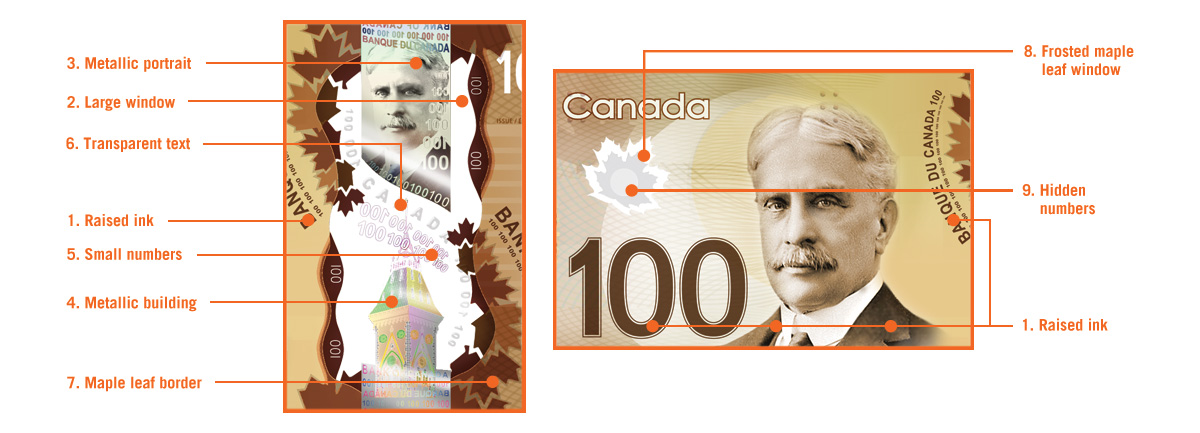The Ottawa Citizen has an interesting review of currency changes to outsmart counterfeiters. It touches on how security researchers use everything from chemsitry to social science to develop controls.
Counterfeits in Canada peaked in 2004, when an estimated 470 out of every million bills were forgeries. The introduction of watermarks and holograms to the “Journey” series of bills that were issued from 2001 to 2004 saw that number plummet. It now sits at only 35 fraudulent bills per million.
In efforts to keep that number low, Firth works with everyone from banknote suppliers and printers to the RCMP and university professors, the latter helping determine the psychology of how people use money, which in turn can help the bank make spotting counterfeits more intuitive for the public. Security features that are fussy, difficult to use or require special equipment, she says, simply aren’t as effective.
Here are instructions from the bank for checking the new notes
Each time the technology is defeated, it has to be circulated out of use and replaced with the next evolution. Canadian bills now will be migrated from cotton-based paper to a polymer. With that in mind, the new bills are expected to be in circulation for more than twice as long.
Each of the 840 million $20-bills “the most popular denomination” now in circulation are expected to last three years. The polymer $20s will last seven and a half.
Either they have far more trust in the new technology, or they don’t mind removing bills from circulation before they expire…or counterfeiting is not the only motivation to move away from paper.
